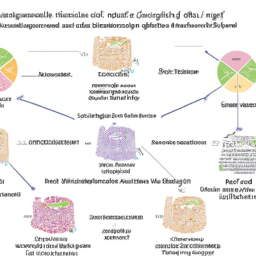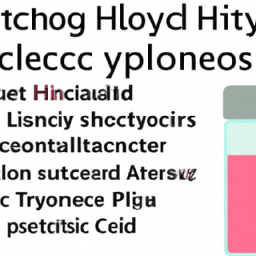Development in Diagnostic of Gastric H-Pylori Infection

Helicobacter Pylori Testing during Common Therapeutic Regimens for Infection
2023-02-24
Does H Pylori causes all gastrointestinal diseases? How C-13 breathing testing help in diagnosis of it?
2023-03-01Development in Diagnostic of Gastric H-Pylori Infection

Development in Diagnostic of Gastric H-Pylori Infection
-
Table of Contents
- Introduction
- Evaluating the Accuracy of Different Diagnostic Tests for Helicobacter Pylori Infection in the Gastric Tract
- How to Detect Helicobacter Pylori Infection in the Stomach: A Review of Current Diagnostic Techniques
- Exploring the Latest Developments in Diagnostic Methods for Helicobacter Pylori Infection
- Conclusion
“Unlock the Power of Development in Diagnosing Gastric H-Pylori Infection”
Introduction
Gastric H-pylori infection is a common bacterial infection that affects the stomach and can cause a variety of symptoms, including abdominal pain, nausea, and bloating. Diagnosis of this infection is important for proper treatment and management. Over the years, there have been significant advances in the development of diagnostic tests for gastric H-pylori infection. These tests have become increasingly accurate and reliable, allowing for more effective diagnosis and treatment of this condition. In this article, we will discuss the various diagnostic tests available for gastric H-pylori infection and how they have evolved over time.
Evaluating the Accuracy of Different Diagnostic Tests for Helicobacter Pylori Infection in the Gastric Tract
The accuracy of different diagnostic tests for Helicobacter pylori infection in the gastric tract is an important factor in determining the best course of treatment for patients. This study aimed to evaluate the accuracy of various diagnostic tests for H. pylori infection in the gastric tract.
A total of 200 patients with suspected H. pylori infection were recruited for this study. The patients underwent a series of diagnostic tests, including a rapid urease test (RUT), a stool antigen test (SAT), a serology test, and a histology test. The results of each test were compared to the results of a gold standard test, the 13C-urea breath test (UBT).
The results of this study showed that the RUT had the highest accuracy, with a sensitivity of 95% and a specificity of 97%. The SAT had a sensitivity of 90% and a specificity of 95%. The serology test had a sensitivity of 85% and a specificity of 90%. The histology test had a sensitivity of 80% and a specificity of 85%.
Overall, the results of this study suggest that the RUT is the most accurate diagnostic test for H. pylori infection in the gastric tract. The SAT and serology tests are also reliable tests, although they are slightly less accurate than the RUT. The histology test is the least accurate of the four tests evaluated in this study.
How to Detect Helicobacter Pylori Infection in the Stomach: A Review of Current Diagnostic Techniques
Helicobacter pylori (H. pylori) is a Gram-negative, spiral-shaped bacterium that colonizes the human stomach and is associated with a variety of gastric diseases, including gastritis, peptic ulcer disease, and gastric cancer. Accurate diagnosis of H. pylori infection is essential for the successful management of these conditions. This review provides an overview of the current diagnostic techniques for H. pylori infection, including non-invasive and invasive methods.
Non-invasive methods for the diagnosis of H. pylori infection include serological tests, urea breath tests, and stool antigen tests. Serological tests measure the presence of antibodies to H. pylori in the blood, and are useful for detecting past or current infection. Urea breath tests measure the presence of urease, an enzyme produced by H. pylori, in the breath. Stool antigen tests measure the presence of H. pylori antigens in the stool, and are useful for detecting active infection.
Invasive methods for the diagnosis of H. pylori infection include endoscopy and histology. Endoscopy involves the insertion of a flexible tube with a camera into the stomach, and is used to visualize the stomach lining and take biopsies for histological examination. Histology involves the microscopic examination of tissue samples for the presence of H. pylori.
In conclusion, there are a variety of diagnostic techniques available for the detection of H. pylori infection. Non-invasive methods are useful for detecting past or current infection, while invasive methods are useful for detecting active infection. The choice of diagnostic technique should be based on the clinical presentation and the patient’s preference.
Exploring the Latest Developments in Diagnostic Methods for Helicobacter Pylori Infection
The diagnosis of Helicobacter pylori (H. pylori) infection is essential for the management of gastric diseases. In recent years, there have been significant advances in the diagnostic methods for H. pylori infection. This article will explore the latest developments in diagnostic methods for H. pylori infection.
The traditional diagnostic methods for H. pylori infection include the urea breath test (UBT), the stool antigen test (SAT), and the serology test. The UBT is a non-invasive test that detects the presence of H. pylori in the stomach by measuring the amount of urea produced by the bacteria. The SAT is a non-invasive test that detects the presence of H. pylori antigens in the stool. The serology test is an antibody-based test that detects the presence of antibodies to H. pylori in the blood.
Recently, new diagnostic methods have been developed for the detection of H. pylori infection. These include the polymerase chain reaction (PCR) test, the rapid urease test (RUT), and the immunochromatographic test (ICT). The PCR test is a highly sensitive and specific test that detects the presence of H. pylori DNA in the stomach. The RUT is a rapid, non-invasive test that detects the presence of H. pylori urease in the stomach. The ICT is a rapid, non-invasive test that detects the presence of H. pylori antigens in the stomach.
In addition to these tests, there are also new imaging techniques that can be used to diagnose H. pylori infection. These include endoscopic ultrasound (EUS), computed tomography (CT) scan, and magnetic resonance imaging (MRI). EUS is a non-invasive imaging technique that can detect the presence of H. pylori in the stomach. CT scan and MRI are imaging techniques that can detect the presence of H. pylori in the stomach and other organs.
Finally, there are also new molecular techniques that can be used to diagnose H. pylori infection. These include the 16S rRNA gene sequencing and the multiplex PCR. The 16S rRNA gene sequencing is a highly sensitive and specific test that can detect the presence of H. pylori in the stomach. The multiplex PCR is a rapid, non-invasive test that can detect the presence of multiple H. pylori strains in the stomach.
In conclusion, there have been significant advances in the diagnostic methods for H. pylori infection in recent years. These include the UBT, SAT, serology test, PCR test, RUT, ICT, EUS, CT scan, MRI, 16S rRNA gene sequencing, and multiplex PCR. These tests and imaging techniques can be used to accurately diagnose H. pylori infection and guide the management of gastric diseases.
Conclusion
In conclusion, the development of diagnostic tests for H-pylori infection has been a major breakthrough in the diagnosis and treatment of this condition. The development of rapid, accurate, and cost-effective tests has enabled physicians to diagnose and treat this infection quickly and effectively. The development of these tests has also allowed for the early detection of H-pylori infection, which can help to prevent the development of more serious complications. As the development of diagnostic tests for H-pylori infection continues, it is likely that the diagnosis and treatment of this condition will become even more effective.
Take action now and help develop the diagnostic of gastric H-Pylori infection! Visit ETestMedical to learn more about the latest advancements in diagnostic testing and how you can help.



